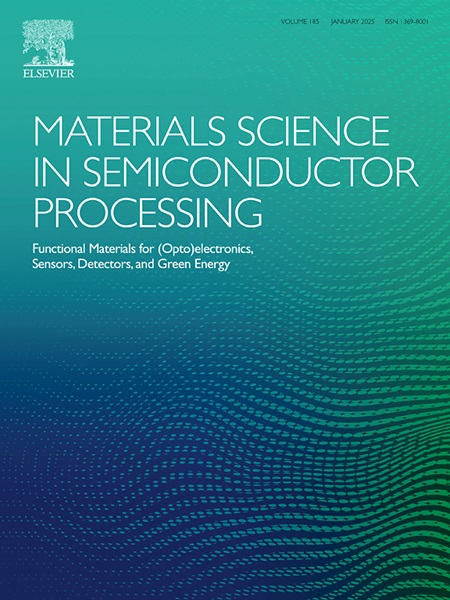In-situ fabrication of Bi2O3/g-C3N4/sepiolite photocatalyst for tetracycline degradation under visible light: Performance, mechanism and degradation pathways
IF 4.2
3区 工程技术
Q2 ENGINEERING, ELECTRICAL & ELECTRONIC
引用次数: 0
Abstract
In this study, the ternary Bi2O3/g-C3N4/sepiolite composite with excellent photocatalytic activity was prepared via hydrolysis precipitation and calcination procedure. The Bi2O3/g-C3N4/sepiolite photocatalyst performed dramatically improved visible-light-driven photodegradation efficiency for tetracycline (TC) within 3 h (91.71 %), which was almost 2.24, 6.5, 1.28, 1.36 1.76 times that those of Bi2O3, g-C3N4, g-C3N4/sepiolite, Bi2O3/sepiolite and Bi2O3/g-C3N4, respectively. The results demonstrated that there was a synergistic effect among the components of the ternary composite, which effectively promoted the separation and transfer of photoinduced electron-hole pairs. The role of sepiolite was particularly important as a carrier of Bi2O3/g-C3N4 heterojunction, providing more reaction active sites and better electron transport path. The quenching experiment showed that O2•- were the main active species during TC degradation process. Furthermore, the photocatalytic degradation mechanisms and possible degradation pathways of TC were also investigated. This work provides new ideas for the mineral-based ternary photocatalytic composites to degrade pollutants in wastewater.

Bi2O3/g-C3N4/海泡石可见光降解四环素光催化剂的原位制备:性能、机理和降解途径
本研究通过水解沉淀法和煅烧法制备了具有良好光催化活性的Bi2O3/g-C3N4/海泡石三元复合材料。Bi2O3/g-C3N4/海泡石光催化剂对四环素(TC)在3 h内的可见光降解效率显著提高(91.71%),分别是Bi2O3、g-C3N4、g-C3N4/海泡石、Bi2O3/海泡石和Bi2O3/g-C3N4的2.24、6.5、1.28、1.36、1.76倍。结果表明,三元复合材料组分之间存在协同效应,有效促进了光致电子-空穴对的分离和转移。海泡石作为Bi2O3/g-C3N4异质结载体的作用尤为重要,提供了更多的反应活性位点和更好的电子传递路径。淬灭实验表明,O2•-是TC降解过程中的主要活性物质。此外,还对TC的光催化降解机理和可能的降解途径进行了探讨。本研究为矿物基三元光催化复合材料降解废水中的污染物提供了新的思路。
本文章由计算机程序翻译,如有差异,请以英文原文为准。
求助全文
约1分钟内获得全文
求助全文
来源期刊

Materials Science in Semiconductor Processing
工程技术-材料科学:综合
CiteScore
8.00
自引率
4.90%
发文量
780
审稿时长
42 days
期刊介绍:
Materials Science in Semiconductor Processing provides a unique forum for the discussion of novel processing, applications and theoretical studies of functional materials and devices for (opto)electronics, sensors, detectors, biotechnology and green energy.
Each issue will aim to provide a snapshot of current insights, new achievements, breakthroughs and future trends in such diverse fields as microelectronics, energy conversion and storage, communications, biotechnology, (photo)catalysis, nano- and thin-film technology, hybrid and composite materials, chemical processing, vapor-phase deposition, device fabrication, and modelling, which are the backbone of advanced semiconductor processing and applications.
Coverage will include: advanced lithography for submicron devices; etching and related topics; ion implantation; damage evolution and related issues; plasma and thermal CVD; rapid thermal processing; advanced metallization and interconnect schemes; thin dielectric layers, oxidation; sol-gel processing; chemical bath and (electro)chemical deposition; compound semiconductor processing; new non-oxide materials and their applications; (macro)molecular and hybrid materials; molecular dynamics, ab-initio methods, Monte Carlo, etc.; new materials and processes for discrete and integrated circuits; magnetic materials and spintronics; heterostructures and quantum devices; engineering of the electrical and optical properties of semiconductors; crystal growth mechanisms; reliability, defect density, intrinsic impurities and defects.
 求助内容:
求助内容: 应助结果提醒方式:
应助结果提醒方式:


